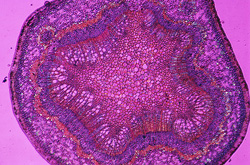Studying quantum aspects of optical images
In recent years, there has been tremendous progress in quantum optics, turning from an academic field to a rapidly developing realm with major applications in the information and computer industry. The QUANTIM project explored the applications emerging from this body of knowledge in the domain of information technology, by merging the fields of classical optical image processing and quantum optics. QUANTIM explored how the spatial aspects of quantum entanglement of light can be used to improve the quality of different functions which are of great importance for information technologies, such as recording, encryption, storage, read-out, refreshment and duplication of optical information. In the project, quantum noise was addressed. Quantum noise is a fundamental property of all systems, due to quantum fluctuations, and persists even if all classical sources of error have been eliminated from the measurement process. Before the beginning of the project, research had already shown that optical measurements could be improved beyond the standard quantum noise limit by using non-classical states of light. During the QUANTIM project, this effect was experimentally demonstrated in the measurement of the position of the centre of a beam. More specifically, it has been experimentally demonstrated that it was possible to improve the measurement of the position of the centre of a light beam at the Angstrom level, well below the standard quantum noise limit. For that purpose, a multimode non-classical light was used, which was obtained by mixing squeezed and coherent beams with appropriate transverse shapes. Furthermore, in a second experiment, simultaneous measurements of the two transverse coordinates of the beam centre were performed, below the standard quantum noise limit. The QUANTIM ideas, results and techniques can be implemented in advanced technology optical imaging systems because they allow the shot noise limit to be reached. This fact, in combination with the continuous advancement in the theoretical understanding of measurement in images will boost new highly sensitive methods in the domain of image acquisition and processing technologies.

